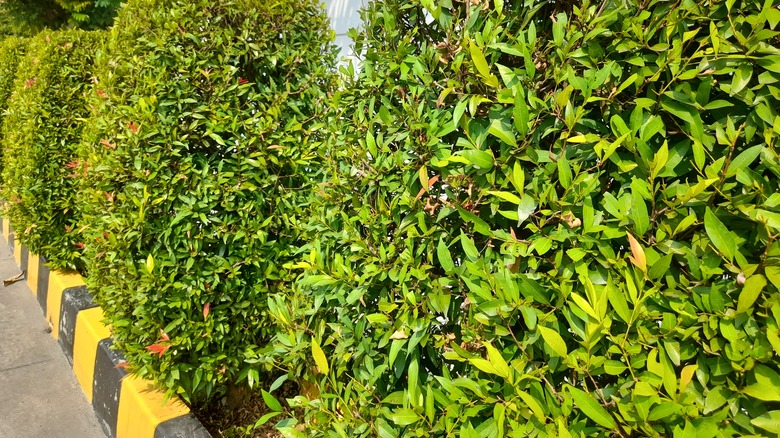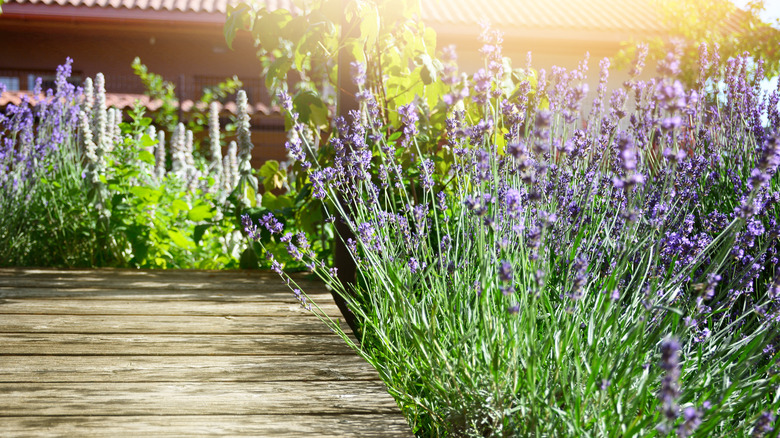Isolate Your Backyard With This Fast-Growing Shrub That Isn't Bothered By Heat
Sometimes, it's good hedges that make good neighbors. There are many varieties you can plant for privacy in your yard, but in Southern California and other warm climbs, one of the most prized is Ficus nitida, which is also commonly known as Indian laurel. The evergreen grows about 2 feet a year (sometimes more under the right conditions) and resists extreme heat while also providing much-needed shade. The hedge is included in HGTV host Jasmine Roth's list of favorite plants that may be perfect for your yard. Just make sure your property is large enough: Ficus can grow to be more than 70 feet wide, which is about the length of two school buses.
Ficus can also grow to be as much as 50 feet high, so it's often aptly referred to as a 'Hollywood-style hedge' for the barrier it can create on a property. As the plant shoots up, its thick, glossy, always-green leaves fill in, closing gaps to prying eyes, especially those trained on celebrities. Presumably, many stars also value the ficus for its environmentally sound superhero-plant powers to fight noise and dust pollution.
What you need to know about ficus hedges
The low-maintenance ficus thrives in full sun in U.S. garden zones 8 to 10, which includes much of California and the deep South. If you plant yourself, follow best practices, including picking a spot with well-draining soil, placing the plant's roots in a hole that is twice as wide, incorporating fertilizer and planting mix, and digging a basin around the roots and then watering deeply.
To create a hedge, each ficus must be planted 2 to 3 feet apart, close enough to build a screen but far enough for the trees to grow. Because the root system spreads widely, garden experts recommend situating ficuses away from homes, pavement, and other structures, otherwise using a root barrier or root guard to prevent damage. Once established, the hedge will need to be pruned and shaped on a regular basis, not to keep it looking manicured but also to maintain its desired size and shape. If you have a skin condition such as eczema, wear gloves, as the sap can cause a flare. In the event of an unusual frost, wrap the ficus in burlap or other protective cover.
These projects might plant a seed for your backyard
While the ficus can be trained to any size (even a bonsai), it's not the only way to bring some peace and quiet to a property, especially when it is cozy. The average size of a U.S. backyard is about a quarter acre, says Home Advisor, ruling out the ficus as a privacy-seeking solution for some homeowners. There are many small backyard landscaping ideas that will transform your space, including showcasing fragrant plants such as lavender, fashioning open-air rooms using sections of fence, and adding cobblestone pathways.
But maybe the hedge is where the heart is, vis-a-vis the statuesque ficus. For those who love West Coast glamor but don't have the space or climate, there is a tree-growing technique that is a perfect privacy solution for small backyards. It's called "pleaching," where tree branches can be trained to spread out vertically or horizontally through lattices. The beauty of pleaching is that you can control the shape and size of the cover, and you get to choose the tree from a number of fetching varieties, including hornbeam, crab apple, and photinia.


